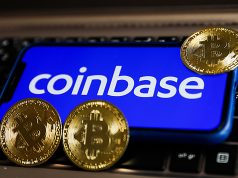
Virtual currencies have taken the financial sector by storm, but as with any new technology, it can be a bit hard to navigate, particularly if uninitiated. Crypto is a vast space that comes with its own set of properties and rules, as well as with a specific language of related terms.
From concepts linked to the technology that underpins digital currencies to consensus mechanisms and dApps, we aim to explain them all to give you a clearer picture of this investment option before purchasing.
Undoubtedly, it’s not about traditional bonds and stocks, so if you want to buy Ethereum or Bitcoin soon, consider informing yourself properly about this unique type of asset and related terms.
Here’s a round-up of some of the most significant and used cryptocurrency words at the moment. We hope that you find it all less cryptic and more enjoyable at the end of this article.
Bitcoin
Bitcoin is a virtual currency similar to fiat currencies, such as the pound, euro, or dollar. But unlike these, Bitcoin is not controlled by a third-party like financial institutions and governments.
Instead, it’s based on decentralization, expected to make investing and trading smoother and faster than in the case of traditional stocks and bonds. Created in 2008 and launched in 2009 by an anonymous individual or group who calls themselves Satoshi Nakamoto, Bitcoin has seen both mild and wild fluctuations throughout time, but even so, it has managed to hog the limelight as the most valuable digital cryptocurrency – which is why it’s also referred to as digital gold.
Blockchain

Blockchain is the underlying technology of Bitcoin and all cryptocurrencies out there, as well as NFTs. Think of this technology as a giant chain made out of sequential blocks that records everything from buying and selling to signing a transaction.
Due to advanced programming algorithms, a blockchain network makes each activity in the crypto space extraordinarily secure and the data transparent. Usually, the more blocks are built upon one another, the more secure the network becomes.
Crypto wallet
Although it’s borrowed from our regular financial vocabulary, the term wallet comes with some special features when used in relation to cryptocurrencies. Electronic wallets are software apps used to keep cryptocurrencies safe. But they don’t store these virtual coins per se but rather the private keys – pieces of code – associated with them.
When encountering this term, you’re also likely to hear phrases like hot wallet and cold wallet. Well, these are the two main types of crypto wallets, and if you’re about to take the digital money route, you should choose them wisely.
Hot wallets provide online storage, meaning they’re connected to the Internet. This makes them more appropriate for short-term holding and day-to-day transfers. Nevertheless, they are more frequently targeted by hackers.
That’s why we recommend picking a cold storage option if you’re going to invest for the long term or keep vast amounts of crypto in your wallet. Cold storage often implies physical devices such as USBs or paper wallets used to store crypto offline and keep it far from the curious eyes of malicious individuals.
Crypto Exchange

A crypto exchange is where you usually purchase and sell your virtual coins. It serves as a brokerage providing investors and traders with useful information about various assets and the possibility to transfer fiat money like the euro and pound from their banks into digital currencies – Bitcoin and altcoins alike. However, learn that most transactions on these exchanges come with some fees.
Liquidity
If you’re going to enter the world of crypto, you’re likely to hear the term liquidity. It might seem confusing, but it’s not. When a cryptocurrency is liquid, it means it can be converted without much trouble into another digital asset or even cash.
Liquidity is an important factor to consider when buying the dip, as it can decide the ease with which you will further sell the rip.
dApp
Decentralized applications, or dApps, are programs designed by developers on a blockchain network. Unlike centralized apps such as Twitter, these apps are decentralized, meaning that users can share and receive data directly without a third party verifying each of their steps. Most dApps of the moment exist on the Ethereum network.
Here, developers build applications of all categories, from finance and property to storage and gambling. Examples of popular dApps include Peepeth, Uniswap, and Upland. Intrigued? Go and try them out!
NFT

After cryptocurrencies, non-fungible tokens (NFTs) are the most popular digital assets. They have the same underlying technology as virtual coins, but what’s so special about them is that they are not interchangeable, so there’s only one individual who can own a particular collectible of the sort.
The variety of NFTs is absolutely incredible, ranging from music and art to real estate, event tickets, and gaming. The last category has seen massive growth during the last couple of years as a new generation of games – Play-to-Earn (P2E) – emerged.
Now, you can play games and earn real money by collecting in-game items and lands represented by NFTs. Some of the most prominent tokens at the time include AXS (Axie Infinity), TLM (Trilium), GODS (Gods Unchained), and SAND (The Sandbox).
Whale
Whale in crypto is, of course, not used with its actual meaning, although it sends somehow to this animal or, better said, to its influence among aquatic species.
Crypto whales are people possessing large amounts of crypto; thus, when buying or selling, they’re likely to influence things like crypto volatility and liquidity.
They could be everything from wealthy individuals like Elon Musk to hedge funds and institutional investors.
Advisably, if you plan to make a purchase, you should keep track of these whales’ activities in the crypto space so that you don’t find yourself in a situation where you lose it all just because an influential individual or company decided to move their vast amounts of coins in a sale.

Do these seem hard to grasp?












